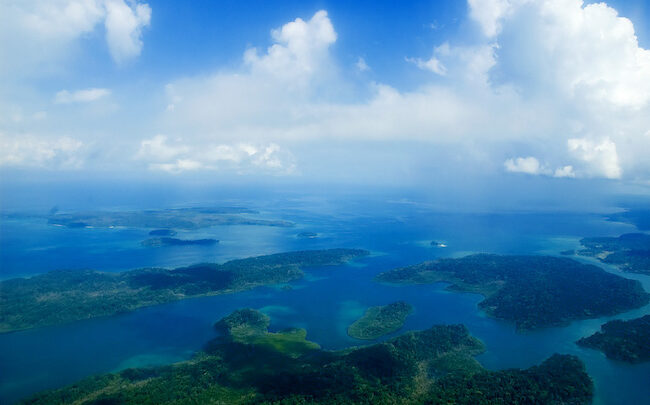India’s quest to dominate the Indian Ocean

By Syeda Saiqa Bukhari
The Indian Ocean Region (IOR) is widely regarded as the hub of global economic and strategic activities for several reasons. For instance, it provides the predominant outlet for oil from the Persian Gulf to various destinations across the globe. More than 80 percent of global oil trade passes through the IOR.
India has long held the desire to dominate this region via the presence of its naval forces and by attempting to exert greater control over its related economic activities. Alfred Mahan once declared that ‘whoever controls the Indian Ocean has prospects of ruling the world. Perhaps it is this theory which best describes India’s quest to dominate the IOR. In the last few years, the region has once again gained significant importance by becoming a hub of strategic competition among regional and extra regional rivals. India’s interests in the region are challenged by the emerging global powers’ roles such as China’s role in the Indian Ocean.
In order to secure its strategic interests, India initiated an unprecedented naval buildup under its vision to turn the Indian Ocean into ‘India’s Ocean’. As a result, India is allocating more and more of its budget to its naval war fighting capabilities including both its conventional as well as strategic forces. Additionally, India’s growing economic interest has heightened the IOR’s strategic significance. India wants to secure ‘sea-lines of communications’ to the Middle East, comprising of vital oil and energy supply chains. In this regard, India is not only strengthening its naval capabilities but also seeking to strengthen relations with smaller states within the IOR. These include Sri Lanka, Maldives, Myanmar, Thailand, Bhutan, Bangladesh, Mauritius and Seychelles.
This has been further evident in Prime Minister Modi’s emphasis on greater engagement with the littoral states of the Indian Ocean. After securing a landmark victory in the 2019 general elections, PM Modi chose Maldives and Sri-Lanka as his first official visit abroad for this term to consolidate India’s position in the Indian Ocean. Such choices clearly show India’s foreign policy priority in the IOR. Moreover, Mr. Modi adopted an agenda which is led by trade and investments, to achieve its great power status that is also benefitting its economy at the same time. A reflection of his Indian Ocean outreach is thus reiterated in the Budget 2019-20 which in itself is aimed at maintaining such a hegemonic influence. India not only economically assists such smaller states in terms of their trade and economic development but is also attempting to build a lasting military relationship with them. This is to play a significant role in its blue water great game. This is further evident in India’s plans to build up its naval and air bases in 300 islands of Andaman and Nicobar.
Prime Minister Modi sees control over the ocean as fundamental to keeping the strategic circle of India over also its rivals forming a significant component of the Indian State’s global ambitions. The progression in its financial approach, political mindset and effective discretions has empowered India’s articulation towards its desire for ruling the Indian Ocean Region.
Likewise, to achieve its objective, India is spending huge amounts for the development of sophisticated naval technologies. India’s naval modernization and its approval of $16 billion for nuclear powered submarines and naval warships are creating challenges for the stability of the South Asian region. Under the aspiration of hosting a Blue Water Navy, India plansto develop more than 160 naval ships, 3 aircraft carriers and more than 40 warships and submarines. Furthermore, India took the first step towards the nuclearization of the Indian Ocean region in 2016 by conducting a successful test of the K-4 indigenously developed intermediate range submarine launched ballistic missile. This is likely to compliment the capabilities of its existing, ballistic missile submarine, the ‘Arihant’.
The naval modernization of the Indian navy is thus in line with its ambitions to maintain its hegemonic status and to exert more control over important chokepoints such as in the Straits of Hormuz and Malacca. But with all these developments, the Indian navy lacks the required professionalism and efficient response capability. This lack of an efficient response capability has remained evident since the post Balakot tensions with Pakistan. This was evident when an Indian submarine failed to covertly enter into Pakistani waters. Detected and thwarted by the Pakistan Navy, this recent failure has cast serious doubts over India’s purported ability to project its naval power. Hence, the Post-Balakot environment has raised glaring questions over India’s self-alleged capability to dominate the IOR. All despite being numerically and financially superior to Pakistan as it has often proclaimed itself to be.
In all, the Indian Ocean has considerable geostrategic and geopolitical significance within the current scenario unfolding in the region. While the world’s major powers are competing with one another to secure their interests in the region, India is also attempting to secure its own foothold as a dominant regional power. By developing closer relations with other IOR states and spending huge amounts of money on the modernization of its naval forces, India’s hegemonic quest to dominate the Indian Ocean Region is creating asymmetry with other comparatively smaller naval powers of the region. This asymmetry would likely pose as an increasingly grave threat to the stability of the South Asian region over the long run.
Syeda Saiqa Bukhari is Research Associate at Strategic Vision Institute Islamabad.




